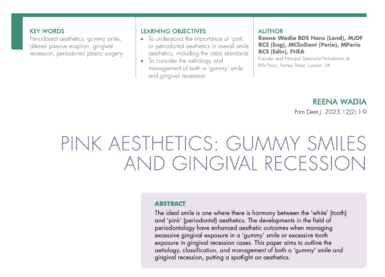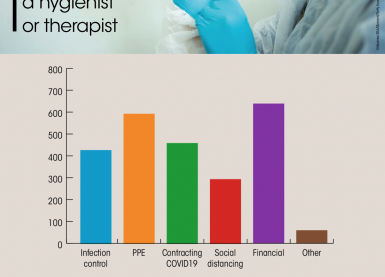Home/Articles
/ General Dental /
Reena’s Notes: TubulesLive with Mr Brijesh Patel – Achieving successful aesthetics with adult orthodontics
March 28, 2014

Stats – in the UK…
- 45% of adults are unhappy with the appearance of their teeth
- 20% would undergo orthodontic treatment
- 74% of all adults have had a tooth extracted
- 84% of all adults have at least one or more restoration
- Each adult has an average of 7 restorations
Patients clinical awareness and expectations on treatment outcomes has increased. There have also been advances in orthodontics – braces are more acceptable, they are smaller and inconspicuous, can be invisible and also usually customised. Short term orthodontics – “speedy braces” is becoming more popular.
Particular challenges in adult patients:
- Old failing restorations
- Edentulous spaces/missing teeth
- Misshaped and/or malformed teeth
- Worn dentition
- Fractured teeth
- Periodontal disease
- Gingival level discrepancies
- Bony defects
- Jaw discrepancies
Diagnosis and planning is key:
- Periodontal examination – pocket depths, plaque control, recession, furcations, mobility, gingival height discrepancies.
- Dental assessment
- Orthodontic assessment – incisor relationship, crowding/spacing, overjet/overbite, buccal segment relationship
- Radiographic assessment
Treatment objectives:
- Problem list
- Inter-disciplinary planning
- Realistic goals
- Determine final set up and occlusion with restorations first and then work backwards
- Define roles and stages of treatment – treat active disease and stabilise dentition, restorations to facilitate movement, adjunctive surgery/restorative treatment, final restorative treatment and retention.
Orthodontic planning:
- Anchorage is key for all treatment
- Simple (mild crowding, crowding with crown/veneer preparation, minimal space closure) – consider removable appliances (traditional or clear aligners) or fixed appliances (“short term orthodontics”, fixed braces, metal/ceramic/lingual).
- Complex (anchorage demanding, tooth wear, reorganised occlusion, periodontal disease, implants, moderate-severe crowding, extraction cases) – consider fixed appliances (fixed braces, metal/ceramic/lingual).
Informed consent is absolutely essential:
- Discuss the alternatives including no treatment
- Create the vision
- Define all stages and who is responsible for each one
- Discuss the risks of all stages
- Long term maintenance
- Realistic timeline
- Written plan and costs
Problem solving:
- Missing anterior teeth is a common problem and as well as spacing it can cause ridge atrophy, tipping of adjacent teeth and poor gingival contour. Options to open space, re-morphologise teeth, gingival surgery or open up space, root paralleling and restore teeth.
- If periodontal disease is stable and well maintained then orthodontic treatment can commence. Light forces and good anchorage is important. Interproximal reduction to reduce black triangles.
- Root resorption is inevitable. Look for risk factors. Undermining resorption, heavy forces, hyalinisation and avascular necrosis.
Summary:
- Take time planning and plan jointly where appropriate.
- Plan the final occlusion first and then work back.
- Plan for orthodontic/restorative failure at the outset.
- Breakdown treatment into stages
- Take good clinical records and consent.
- Long term maintenance is vital!



